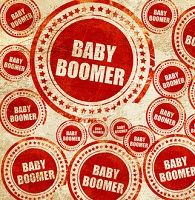Article
Baby Boomers' Behavior Adds to HIV Risk
Author(s):
Baby Boomers face unique risks when it comes to HIV infection--ones due more to attitudes and behavior than medical issues.

Baby Boomers face unique risks when it comes to HIV infection--ones due more to attitudes and behavior than medical issues.
Older people are more likely than younger people to be diagnosed with HIV late in the course of infection.
That means they start treatment later and likely incur more damage to their immune systems, putting them at greater risk of death.
Reporting on its latest HIV/AIDS surveillance results, the US Centers for Disease Control and Prevention (CDC) today offered statistics and analysis on how many people 50 and older have the virus, and the challenges that presents to physicians.
“Late diagnoses can occur because healthcare providers may not always test older people for HIV,” the CDC noted, adding that patients in that age group also may not think it likely they are infected.
Sociological factors at work include the fact that while many older people are sexually active and may have the same risk factors as younger people including lack of knowledge about HIV and prevention, they have some unique traits.
Many widowed and divorced people are newly having sex with partners whose HIV status they do not know. Wrongly thinking that HIV is just a matter for the young to worry about, these newly single people may be less likely to practice safe sex.
That is also true for women who no longer have to worry about pregnancy and don’t require their male partners to use a condom. Aging also means older women have more fragile vaginal tissue, making them more likely to contract the virus from partners.
The stigma of HIV “is a particular concern among older people because they may already face isolation due to illness or loss of family and friends,” the CDC noted, creating a fear that may prevent older people from seeking HIV care and from disclosing their HIV status.
Blacks are over-represented among people who have HIV, including older people. The AIDS stigma is particularly strong is some black churches, another factor that can interfere with people revealing that they have the virus, seeking testing, and getting treatment.
Working with other federal agencies, the CDC is working to improve awareness of HIV in this demographic.
One project Prevention IS Care provides continuing education and materials for physicians who want to help patients address HIV concerns.
About 42% of Americans living with diagnosed HIV are 50 or older and that does not include those who have the virus but either do not know or have not sought care.
Even after getting diagnosed, the fact that the diagnose comes relatively late can mean a shorter life for these patients.
Among people age 55 and older diagnosed with HIV in 2012 and still alive at the end of 2013, only 58% were able to achieve a suppressed viral load.
Of 6,721 deaths from HIV in 2014, 2,610 (39%) were among people age 55 or older.
Further Coverage:
Southern Living: Why the South is the Epicenter of AIDS in the US
VIDEO:Human RIghts Watch Investigating HIV Epidemic in Southern States





